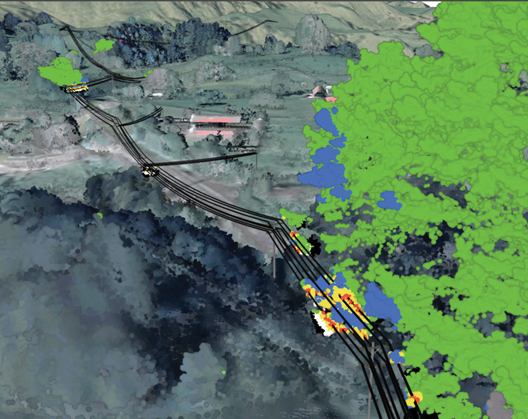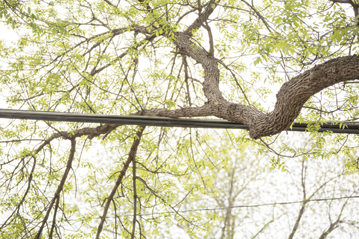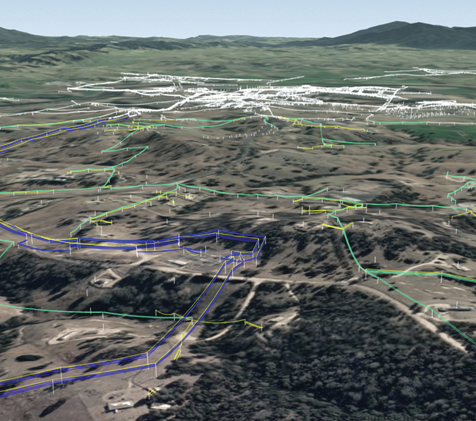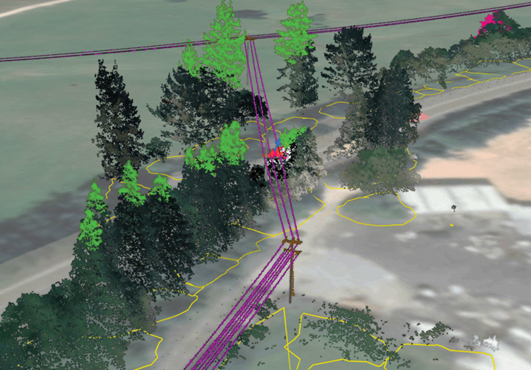If you turn on your TV, read a newspaper or look at social media, it is obvious that wildfires are becoming an increasing global threat. No industry is more cognizant of this danger than the electric utility sector. They face a unique challenge. How can a utility reduce the ways their infrastructure can ignite a blaze while simultaneously minimizing the impact a fire has on its network and customers' energy flow?
The most effective way to minimize the outcomes of a fire is to prevent one from happening. While utilities cannot control lightning strikes or human carelessness, they can greatly reduce the chances of igniting a fire from things that are within their control, like conductor clashing, vegetation encroachment, or equipment failure.
Wildfire challenges facing the utility sector
Utilities face numerous and often formidable challenges in preventing or mitigating wildfire damage. The power lines and coupled equipment utilities rely on are inherently complex and increasingly hazardous — not only because of weather conditions or climate but also from the threats of vegetation encroachments. In many areas in the utility's network, vegetation runs through or along their spans, making them susceptible to wildfire disasters.
The size and scale of a typical utility network further complicate matters. A utility faces the critical challenge of carefully overseeing thousands of miles of power lines, which requires extensive monitoring and manual inspection of their assets. Failure to identify even the smallest network vulnerabilities can have severe financial and operational consequences. Utilities are realizing that manual processes are no match for the threat of wildfires — they need the proper processes, management systems and emerging technologies to safeguard operations more efficiently while keeping surrounding communities and ecosystems in mind.

Figure 2: Vegetation encroachments in a span
The case for innovation
The scope of work for wildfire risk mitigation is bigger than ever before. Population growth and climate change have caused the volume and intensity of wildfire disasters to increase. As a result, there is a greater need for utilities to evolve and develop innovative processes when approaching and managing these events.
In the past, on-site fieldwork and paper processes were the only options to capture data about network assets, the surrounding operating environment and operating risks. Now, with a greater need for optimization, risk management processes are quickly changing and adapting to digital transformation. Vegetation management data primarily drives the case for innovation, as direct contact between vegetation and a utility’s assets is one of the most common wildfire sources. However, vegetation poses risks that go beyond simple proximity to a network’s power lines. Other factors include neighboring trees growing into power lines, nearby trees falling onto power lines, or power wires swaying into trees.
While vegetation is the primary causal factor, it is not the only utility risk. Typically, utilities have prioritized cost management and operated their equipment until it fails, but asset failure has been the cause of some recent fires. Additionally, equipment interaction, like conductor clashing, is a threat. To mitigate these risks utilities must analyze their equipment, identify problem infrastructure and evaluate or eliminate the threat through maintenance, replacement, or grid hardening programs.
Forward-thinking organizations are integrating simulation and analytics solutions into a four-step method to guide their management process. The method consists of identifying problems, forming a plan, executing it and then performing an audit to report progress. First, identifying information and answering questions, such as where growth patterns have changed, can help utilities to further strategize and build an effective course of action for the work that needs to be done. This is where having a digital twin will help serve as an indistinguishable counterpart for practical purposes through system simulation, integration, testing, monitoring and maintenance dashboards, all in one integrated platform.
Innovative solutions for wildfire prevention
Utilities are on the frontline when it comes to wildfire prevention. So, what can utilities do to better control their risk and avoid the ever-increasing threat of wildfires? For one, they can model their network, using a digital twin to better understand what could happen if a wildfire ignites. In doing this, utilities can better prepare to defend the communities they serve and their critical assets from wildfires.
Digital twins can not only predict how a utility will perform but can also identify wildfire threats like vegetation encroachment or high-risk equipment and precisely simulate adverse weather conditions across the network. Digital twins can also model specific weather environments to calculate blow-out or conductor sag. This type of modeling not only reduces costs but also integrates all field data into a single, refined dashboard. When using a digital twin, utilities have proven to be better equipped for wildfire risk mitigation by incorporating geospatial data, indicating early-warning risks and improving response and recovery measures.
When looking for the right digital twin solution, it’s important to investigate technologies that offer an all-inclusive accurate wildfire risk mitigation strategy consisting of a network model setup, pre-wildfire preparation, during wildfire response and post-wildfire recovery. By implementing this strategy, utilities can simulate conditions in which failure might occur and cause wildfires while identifying and eliminating potential problems across your network before they happen.
Case Study: How digital twin technology helped a utility protect their community during a wildfire
A physics-enabled digital twin platform that builds 3D interactive models of critical infrastructure networks and assets has been used to help mitigate risks associated with wildfires. An Australian electricity infrastructure company sought out this digital twin to help keep their systems protected and strengthen their commitment to safety. The utility regulates one of the continent’s largest electrical distribution networks – delivering electricity to more than 880,000 homes and businesses across 95% of New South Wales and southern parts of Queensland through 125,000 miles (201,168 km) of the network.
The digital twin project for the company began with classifying a LiDAR dataset to build a 3-D network model of the utility’s poles, conductors and surrounding vegetation. The all-encompassing digital twin model allows the platform to run real-world scenarios and assess current and future risks while prioritizing network investment, maintenance and disaster response protocol.
Australia has been no stranger to wildfires, so as the wildfire risk and damage grew during the summers of 2019 and 2020, the utility was able to house and overlay its critical data through the digital platform in preparation. This gave them the ability to identify and assess damage and risks to equipment to mitigate wildfires. As a result, repairs were implemented and power was restored to communities around the utility’s impacted areas.
The digital twin’s successful work for the utility’s wildfire mitigation and response led the company to expand its scope with the platform to undertake other grid-hardening activities, such as encroachment and pole leasing analysis as well as modeling to assess fall-in risk for vegetation throughout the utility’s network.
Conclusion
To prepare for what is expected to be an increasingly challenging climate, utility providers and other stakeholders must remain innovative when it comes to seeking and implementing solutions that reduce risk. Continuing conversations around technologies like a digital twin and other solutions will enable utilities and their stakeholders to better manage and mitigate risk. In this work, digital twins are at the forefront of allowing utilities to simulate, analyze, report and safeguard their networks. By incorporating information from field analysts, digital twins provide a better method of communication throughout an entire utility’s field of work. As utilities are one of the most frequent initiators of wildfires, they have the responsibility to utilize proper, accurate management systems to minimize risk.
 Robert Brook is SVP and GM Americas at Neara and has spent more than 30 years in the energy and information technology industries and is a recognized expert in the development and implementation of technology for infrastructure and asset management as well as risk mitigation. He previously has filled key industry positions, including president of Hecatic Labs, senior director of business technology at Pacific Gas and Electric Co. and global utility industry manager at Esri.
Robert Brook is SVP and GM Americas at Neara and has spent more than 30 years in the energy and information technology industries and is a recognized expert in the development and implementation of technology for infrastructure and asset management as well as risk mitigation. He previously has filled key industry positions, including president of Hecatic Labs, senior director of business technology at Pacific Gas and Electric Co. and global utility industry manager at Esri.










